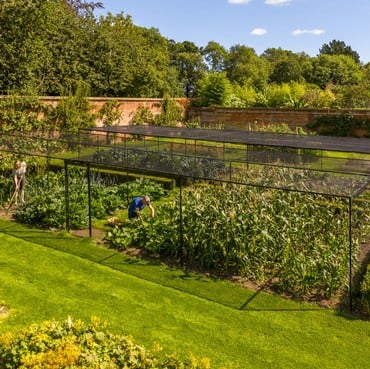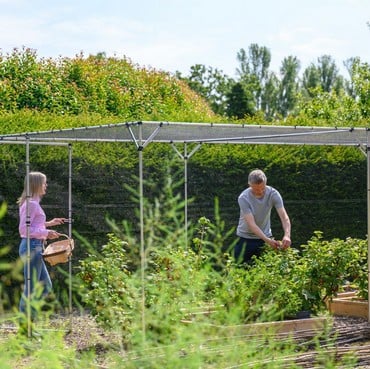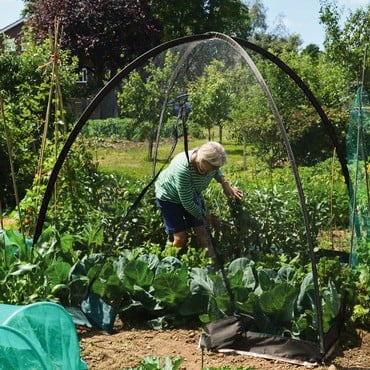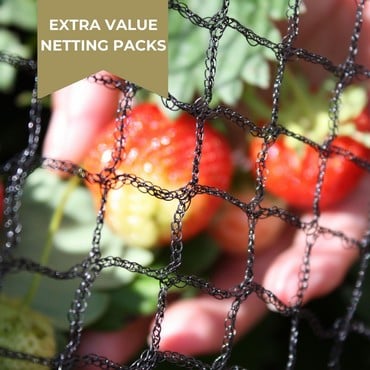With interest in Grow Your Own flourishing, Fruit Cages are fast becoming staple additions to the garden. There is nothing more upsetting than discovering your tasty strawberries, raspberries, leeks, or other such delights have been devoured by garden pests and animals. A fruit cage increases the amount of produce that makes it from the veggie patch to the table.
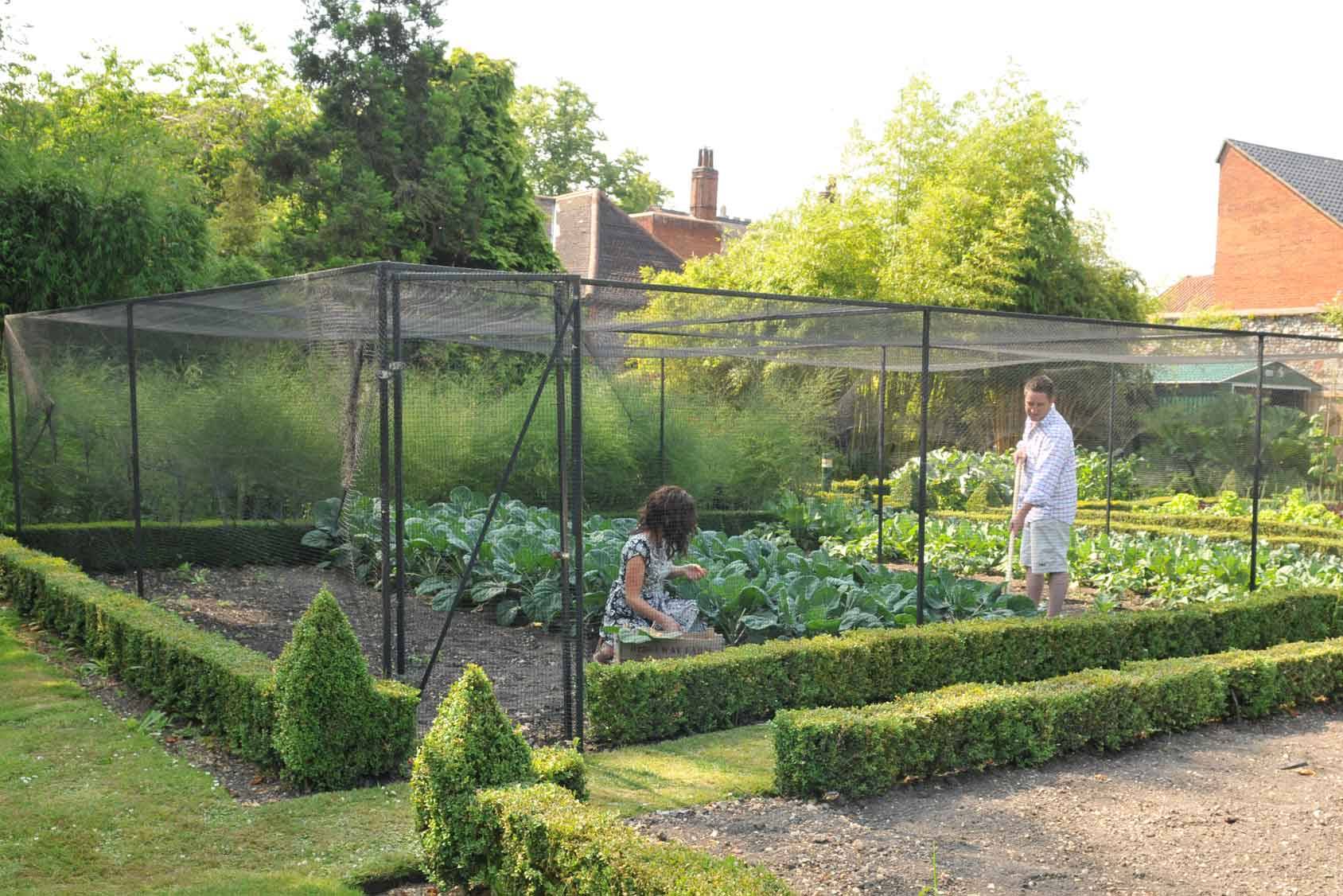
What is a fruit cage?
Simply, a fruit cage is a protective enclosure to stop your homegrown crops being eaten by troublesome garden critters. From pigeons and squirrels to rodents and cabbage white butterflies, your precious fruits and vegetables are just as tasty to others as they are to you.
What are the different types of fruit cages?
Selecting the correct type of cage for your garden and crops can be tricky, we’ve detailed the four main types below:
Steel fruit cages – Robust, sturdy and long lasting, steel fruit cages come in a variety of sizes and styles. Steel is a heavy material, which helps the cage stand up to brisk winds and weather. These cages are large enough to walk around inside, with plenty of space to grow pretty much any fruit and veg from strawberries and salad crops right up to raspberries and other tall fruiting bushes.
Aluminium fruit cages – Considered the most cost-effective fruit cage for crop protection, aluminium fruit cages are designed for use on flat and very slightly sloping surfaces. These fruit cages are more lightweight than steel cages and are easy to move and construct. Like the steel designs, rust will not be an issue for aluminium fruit cages, definitely a bonus in the British weather. There is lots of choice too with walk-in cages and lower height cages too for smaller crops and strawberry plants.
Timber fruit cages – Introducing a rustic and natural look to the garden, these cages really enhance the more classic style of kitchen garden. Yearly weatherproofing is required to prevent rotting and to maintain its appearance.
Popadome crop protection cages – Easy to put up and down and perfectly suited to smaller plots, Popadomes are available in a variety of sizes and deal with salad crops, brassica veg and fruit bushes. They come complete with a zip access strip, making watering and harvesting your crops easy.
What about netting?
Often, fruit cages will come complete with suitable netting, but in most instances, this is customisable to suit your own specific needs. Here at Harrod Horticultural, our walk-in fruit cages feature a 16mm square mesh side netting and essential heavy-duty anti-bird or knotted roof netting. The smaller cages feature butterfly netting on the sides and roof, ideal for keeping out birds too. Our Popadome crop protection cages feature a fine black butterfly netting that blocks access to birds, butterflies and other small animals, whilst other covers are available too such as mesh, polythene and fleece.
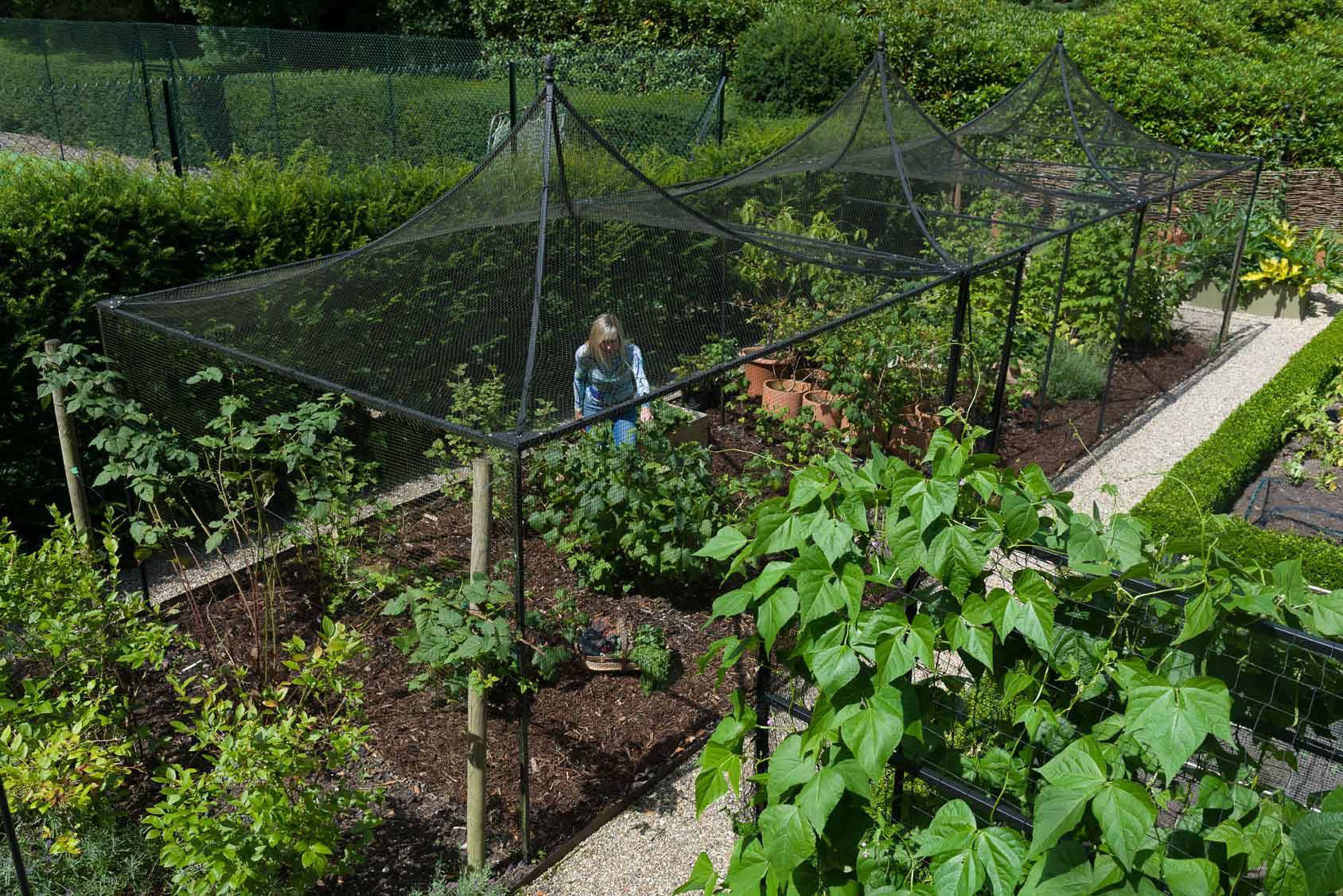
Adding a decorative element to your cage
Bring style and sophistication to fruit and vegetable growing by opting for a decorative roof to on your steel cage. From dome and pavilion to ogee and peak, these elegant cages will add character to your garden as well as protecting your precious crops.
Caring for your fruit cage
- Keep on top of weed within your cage, especially the edges. Bindweed will travel up the sides given half the chance.
- Remove the roof netting if snow is forecast as the weight can bend the poles. However, there is no need to remove the roof if you have a decorative cage. Their unique design withstands snowfall.
- If cages are sited in windy areas or soft soil, then consider brace kits to add


















